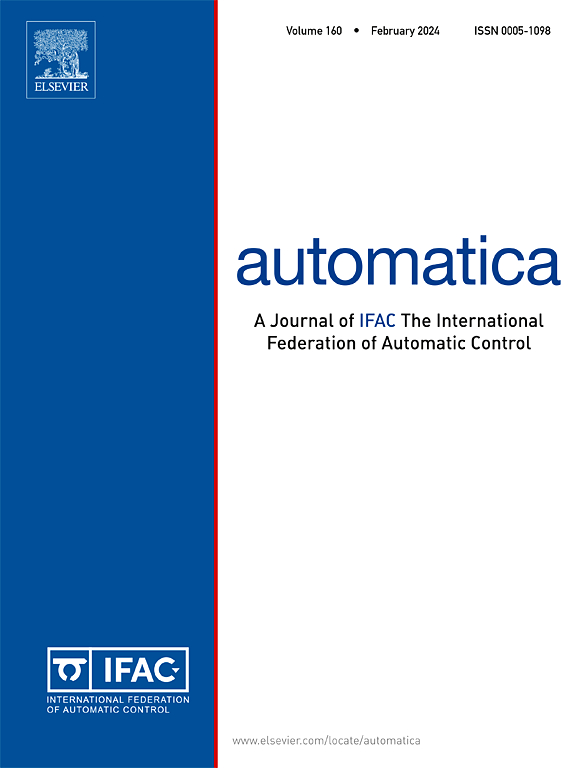Time-extended consensus for multi-agent non-interactive collaboration
IF 4.8
2区 计算机科学
Q1 AUTOMATION & CONTROL SYSTEMS
引用次数: 0
Abstract
Plan-based coordination, which can fill the vacancy of control during the communication silent periods, improves the ability of agents’ independence and reduces the requirement of communication resources. This paper presents a generalized form of plan-based coordination, namely the time-extended consensus problem, which is applicable to multi-agent systems entering non-interaction state. Conditions for achieving time-extended consensus are described for systems subject to the Lipschitz condition. A control protocol for time-extended consensus is constructed using linear superposition of drag vector fields. The convergence process of time-extended states based on the proposed control protocol is investigated in terms of the speed of approaching consensus. Simulation results demonstrate the advantages and limitations of the proposed method for time-extended consensus and how it compares to conventional multi-agent state synchronization.
多代理非交互式协作的延时共识
基于计划的协调可以填补通信静默期的控制空缺,提高代理的独立能力,降低对通信资源的要求。本文提出了基于计划的协调的一种广义形式,即时间扩展共识问题,它适用于进入非交互状态的多代理系统。本文描述了在 Lipschitz 条件下系统实现延时共识的条件。利用拖曳矢量场的线性叠加构建了时间扩展共识的控制协议。研究了基于所提控制协议的时间扩展状态的收敛过程,即接近共识的速度。仿真结果表明了所提出的延时共识方法的优势和局限性,以及它与传统多代理状态同步的比较。
本文章由计算机程序翻译,如有差异,请以英文原文为准。
求助全文
约1分钟内获得全文
求助全文
来源期刊

Automatica
工程技术-工程:电子与电气
CiteScore
10.70
自引率
7.80%
发文量
617
审稿时长
5 months
期刊介绍:
Automatica is a leading archival publication in the field of systems and control. The field encompasses today a broad set of areas and topics, and is thriving not only within itself but also in terms of its impact on other fields, such as communications, computers, biology, energy and economics. Since its inception in 1963, Automatica has kept abreast with the evolution of the field over the years, and has emerged as a leading publication driving the trends in the field.
After being founded in 1963, Automatica became a journal of the International Federation of Automatic Control (IFAC) in 1969. It features a characteristic blend of theoretical and applied papers of archival, lasting value, reporting cutting edge research results by authors across the globe. It features articles in distinct categories, including regular, brief and survey papers, technical communiqués, correspondence items, as well as reviews on published books of interest to the readership. It occasionally publishes special issues on emerging new topics or established mature topics of interest to a broad audience.
Automatica solicits original high-quality contributions in all the categories listed above, and in all areas of systems and control interpreted in a broad sense and evolving constantly. They may be submitted directly to a subject editor or to the Editor-in-Chief if not sure about the subject area. Editorial procedures in place assure careful, fair, and prompt handling of all submitted articles. Accepted papers appear in the journal in the shortest time feasible given production time constraints.
 求助内容:
求助内容: 应助结果提醒方式:
应助结果提醒方式:


